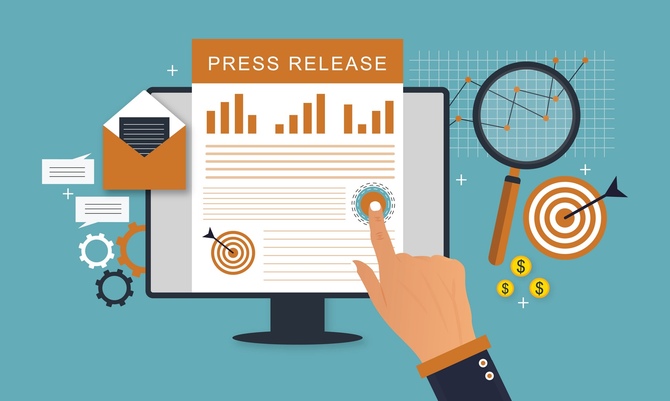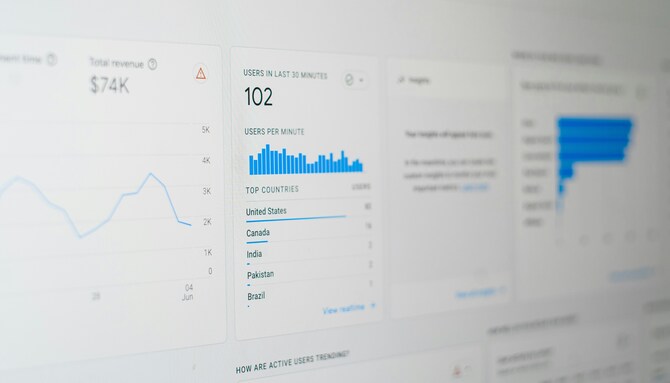The Ultimate Checklist for Crafting Perfect Press Releases
The perfect press release checklist should include the following:
- Compelling Headline: Does your headline grab attention and accurately reflect your news?
- Strong Lead Paragraph: Does your lead answer the who, what, when, where, and why, succinctly summarizing your key message?
- Engaging Body: Is your body content well-structured, informative, and engaging for readers?
- Essential Elements: Does your press release include a boilerplate, media contacts, a clear call to action, and relevant multimedia assets?
- SEO Optimization: Have you incorporated relevant keywords for better search engine visibility?
- Distribution Strategy: Do you have a plan for effectively distributing your press release to your target audience?
- Measurable Results: Have you identified metrics to track the success of your press release campaign?
Ensure these bases are covered, and you’ll be well on your way to commanding attention, building brand awareness, generating media coverage, shaping public perception, or driving leads and sales.

Now let’s go into the elements in more detail.
Crafting a Compelling Headline
The headline is your first impression, so it needs to be powerful and attention-grabbing. Here are some tips for headlines that get noticed:
- Be clear and concise: Directly state the news in a clear and concise way. Ideally, your headline should be under 10 words.
- Use strong, active verbs: Inject energy and excitement into your headline by deploying strong verbs like “inject” and “deploy.”
- Include relevant keywords: Optimize your headline for search engines by incorporating relevant keywords that your target audience might use.
- Highlight the benefit: Spark interest by emphasizing the key benefit of your news.
Example: New App Reduces Workout Time by 50%, Boosting Fitness Efficiency (This headline is clear, concise, uses strong verbs, and highlights the benefit)
Writing a Strong Lead Paragraph
The lead paragraph is your opportunity to keep them reading. It should answer the who, what, when, where, and why questions, grabbing the reader’s attention and enticing them to learn more.
- Start with the most important information: Don’t bury the lead! Get straight to the point by stating the most important details of your news up front.
- Use strong, active verbs: Maintain a dynamic tone with strong verbs.
- Keep it concise: Aim for 2-3 sentences.
Developing the Press Release Body
The body of your press release should provide additional details and supporting information to expand on the information introduced in the lead paragraph. Here’s how to craft an engaging body:

- Use clear and concise language: Avoid jargon and technical terms. Aim for a professional yet easy-to-understand tone.
- Organize information logically: Structure your body with clear headings and subheadings to improve readability. Break up large chunks of text with bullet points or numbered lists for easy scanning.
- Use quotes: Enhance credibility and add a human touch by incorporating quotes from key figures involved in your news, such as company executives, industry experts, or event participants.
- Include relevant statistics and data: Support your claims and highlight the significance of your news with statistics, figures, or market research data.
- Keep paragraphs short: Aim for 2-3 sentences per paragraph to maintain reader engagement.
Incorporating Essential Elements
A well-structured press release includes several essential elements that provide additional context and information that makes it easy for the reader to cover your story:
- Boilerplate: A brief overview of your company, its mission and its achievements. This should be concise, informative and written in the third person.
- Media contacts: Provide clear and accurate contact information for media inquiries. This should include names, email addresses and phone numbers for designated media relations personnel.
- Call to action: Clearly state what you want readers to do after reading your press release. Do you want them to visit your website, contact sales or register for an event? Make sure your call to action is prominent and easy to follow.
- Multimedia assets: Enhance your press release by including high-quality images, videos or infographics that visually represent your news. Ensure these visuals are relevant, high-resolution and have clear captions.
Optimizing for SEO
Optimizing your press release for search engines can significantly increase its visibility. Here are some SEO best practices to consider:

- Keyword research: Identify relevant keywords and keyphrases that your target audience might use to search for information related to your news. Incorporate these keywords naturally throughout your press release, but avoid keyword stuffing.
- Meta description: Craft a compelling meta description that summarizes your press release and entices readers to click on it in search engine results.
- Image optimization: Use descriptive file names and alt text for your images. This enhances accessibility, which search engines value.
- Internal and external link building: Include relevant links to your website, other authoritative sources or additional information that supports your press release content. Seek out others who might link back to your press release.
Distributing Your Press Release
Effective distribution ensures your press release reaches your target audience and generates the desired impact. Here are some key distribution channels to consider:
- Online press release distribution services: Platforms like PR Newswire, Business Wire, or Cision distribute press releases to a wide audience of journalists and media outlets.
- Media outreach: Directly pitch your story to relevant journalists and influencers who cover your industry. Personalize your outreach and highlight the newsworthiness of your press release.
- Social media: Share your press release on your company’s social media channels, along with relevant hashtags to increase visibility. Encourage your followers to share and engage with the content.
- Email outreach: Send the press release to your email list, industry contacts and potential partners. Segment your email list to ensure your message reaches the most relevant recipients.
Measuring and Analyzing Results
Tracking the success of your press release campaign is essential for evaluating its effectiveness and making improvements for future releases. Here are some key metrics:
- Media coverage: Monitor online and print publications for mentions of the news contained in your release. You can use media-monitoring tools to track coverage and measure its reach.
- Social media engagement: Analyze likes, shares, comments and clicks generated by your social media posts promoting the press release.
- Website traffic: Track website traffic, particularly from the channels where you distributed your press release. Analyze how many visitors came to your site after reading the press release and what pages they visited.
- Media inquiries: Monitor the number of media inquiries you receive as a result of your press release. This indicates journalist interest and potential for further media coverage.
- Leads and sales: If your press release aimed to generate leads or sales, track the number of leads generated and conversions achieved.
By monitoring these metrics, you can gain valuable insights into the performance of your press release campaign and identify areas for improvement.
Crafting a perfect press release requires careful planning, strategic execution and a commitment to delivering clear and newsworthy information. By following the checklist outlined in this guide, you can give your news its best chance at reaching the audience you need.

